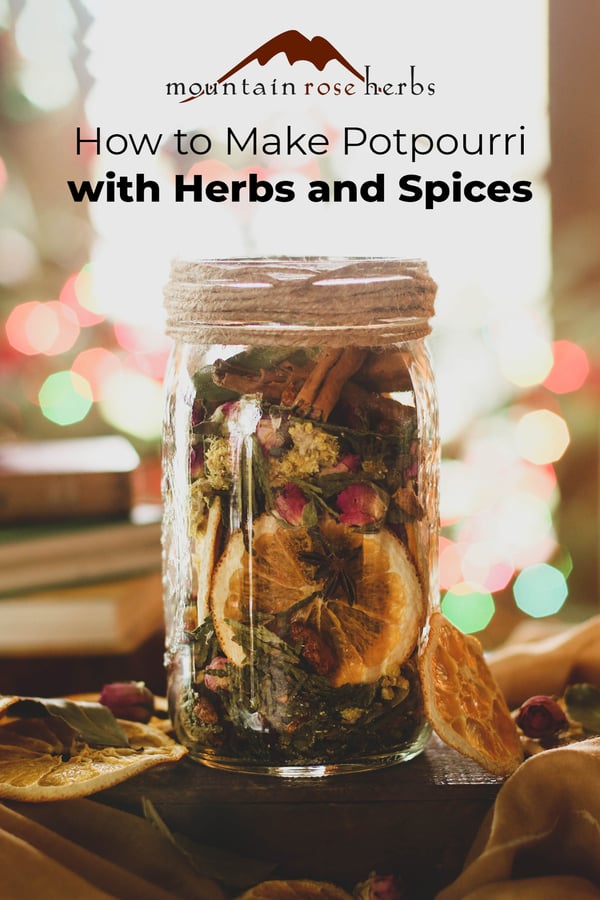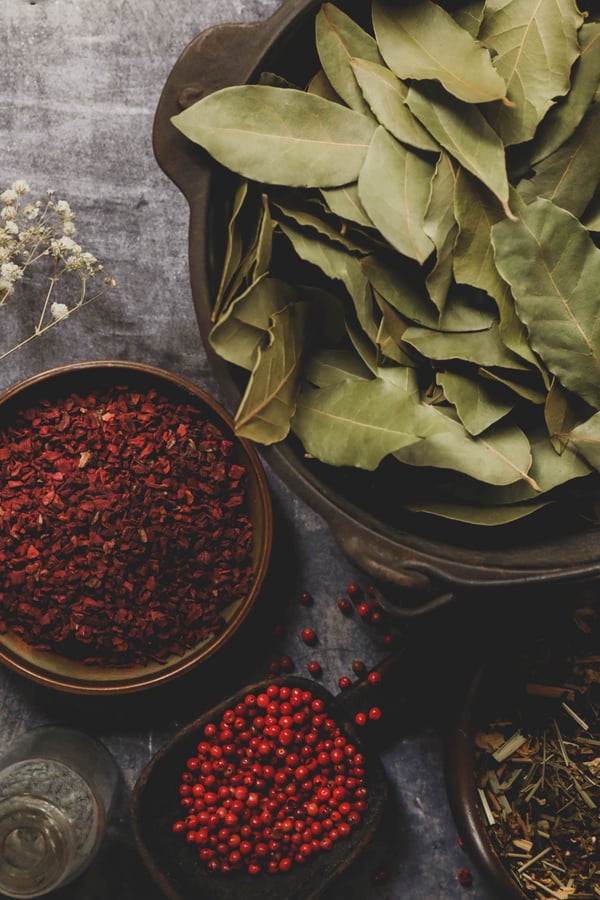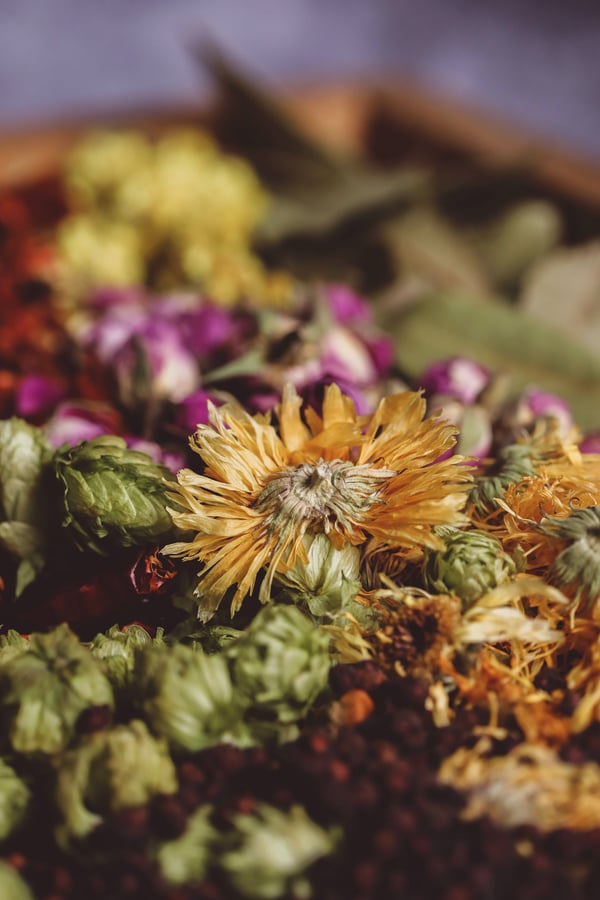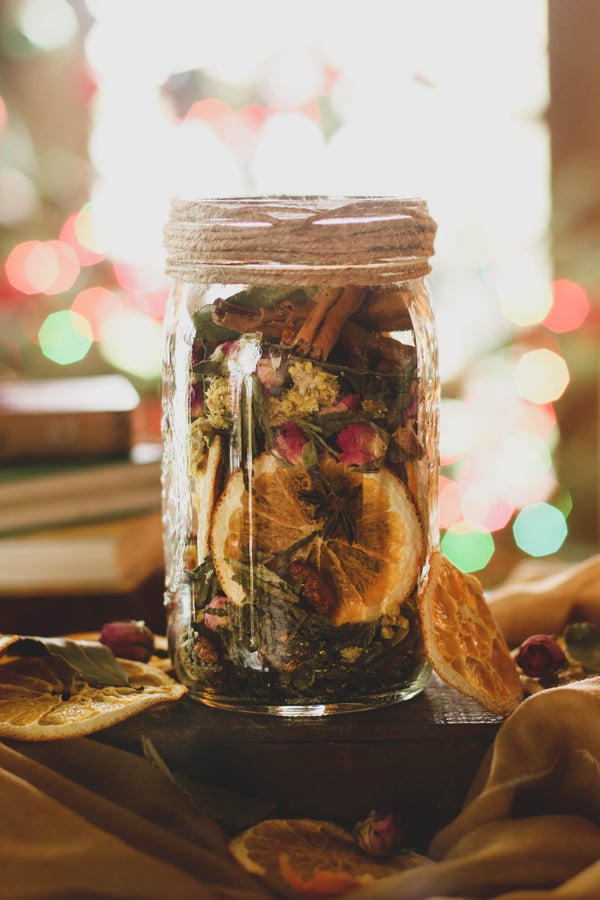
Olfactory memories are powerful things. The other day I was at the feed store picking up cat food, and as I walked out, I caught a waft of chewing tobacco. Even before I could identify what I was smelling, my feet stopped walking and my Grandpa Albert—who is many years gone—popped into my head. There in my mind’s eye, he was in his overalls, with a plug of tobacco in his pocket, snuggling small-me in his lap, playing the penny counting game we used to play. This relationship between scent, emotion, and memory is hardwired in our brains—our olfactory bulb routes the smell information it receives to the limbic system, including the areas of our brain directly related to emotion and memory. This is why just a whiff of scent took me back decades and flooded me with the same warmth and comfort I experienced playing games with my beloved grandpa. These powerful connections are a fundamental factor in why aromatherapy can be supportive in managing mood and stress because what we smell literally impacts our brains… all of which brings me in a roundabout fashion to potpourri.
DIY herbal potpourri is easy to make and is a perfect wintertime project. Whether you’re looking to customize the scents in your home, craft homemade gifts for the holidays, or you just need a fun project to do with the kids, this mix of all-natural botanical fragrances is a good solution. Put it into an open bowl to gently scent a room, tuck bags into your dresser drawers, or put one in the car to give your brain something soothing or invigorating to breathe while you’re on the move.
Homemade Potpourri: The Basics
There are two essential elements in a good DIY potpourri: the bulk herbs that make up the base, and a fixative powder that will be the medium for adding essential oils to heighten the aromas you choose. Initially, the bulk herbs will add their own scents to the mix, but as their natural odors fade over time, you can revitalize your potpourri simply by adding more essential oil fragrance. So, although you can take into account the scents of the herbs you choose, you really want to consider how they look together, particularly if you’re gifting the potpourri or putting it in a glass container where you can see the herb mix. Take your time in choosing; try to find a balance of color, size, and texture. Also look for interestingly shaped herbs and/or ones that are fluffy, just for visual appeal. You can always add more of a particular color or pick out anything that offends you before you add the fixative powder.
Organic Bulk Herbs for Potpourri Base
I used 1-3 handfuls of each of the following. You'll see as you go which herbs look best together - be creative!
- Allspice, whole
- Anise, star pods
- Arnica flowers
- Bay leaves
- Bilberry leaves
- Bird’s Eye Chili, whole
- Bitter melon fruit
- Buckthorn bark
- Calendula flowers, whole
- Cardamom pods
- Cedar berries
- Cedar leaf
- Chamomile flowers
- Cloves, whole
- Coriander seed
- Cornflowers
- Curry leaves
- Grapefruit peel
- Hawthorn berries
- Helichrysum flowers
- Hibiscus flowers
- Hops flowers
- Horse chestnut
- Juniper Berries
- Lemon peel
- Lycii berries
- Maitake mushrooms
- Mullein flowers
- Myrtle leaves
- Orange peel
- Patchouli leaves
- Rose buds and rose petals
- Senna leaves and senna pods
- White sage (cultivated)
When you’ve chosen your herb mix, consider what kind of fixative powder you want to use. You’ll be mixing the powder with essential oils and then with your herb base.
Organic Herbal Fixative Powders
Angelica Root Powder— Angelica is the European cousin of the more familiar dong-quai. A graceful flowering plant related to carrots, dill, and fennel, it has an intense yet sweet “carroty” aroma. Our angelica root powder is ground from organic Angelica archangelica roots.
Benzoin Gum Powder—Styrax benzoin resin has been admired for centuries for its warming, vanilla-like aroma. Benzoin gum powder is often used in perfume and incense blends for its scent but can also be employed as a stabilizer and fixative. Note that it will sometimes harden under fluctuations in humidity.
Calamus Root Powder—Our calamus powder is milled from Acorus calamus roots. Calamus root powder can be incorporated into a variety of topical products including to scented hair powders, lotions, and herbal bath blends. Also, Walt Whitman wrote 39 poems for calamus in his famous work, Leaves of Grass.
Frankincense Powder— Frankincense powder is ground from the resin of the small, leafy Boswellia sacra tree. Thought to hold magical powers and improve spiritual communication, the resin was valued for its spiritual connotations and luxurious aroma for thousands of years.
Myrrh Gum Powder—A highly aromatic resin, myrrh gum comes from the yellow sap of the low-growing desert tree Commiphora myrrha. It has been used for thousands of years and was much beloved by the ancient Egyptians. When ground, it is exceptional in incense blends and when incorporated into herbal creations.
Orris Root Powder—Also known as flag iris, orris is a member of the iris family with beautiful, large, purple flowers. The ancient Greeks used the violet-scented root in perfumery. Our orris root powder is ground from organic Iris germanica. Orris root powder can be employed as a fixative in potpourri or a stabilizer in cosmetic products and will impart its pleasant scent if added to herbal sachets.
How to Make Homemade Potpourri
Ingredients
- Bulk organic herbs of choice
- Organic fixative powder of choice
- Essential oils of choice
Directions
- Mix dry herbs together in large bowl, folding and fluffing gently as you adjust for color or other visual appeal. Set aside.
- For every 4-5 cups of mixed herbs, place 1 tablespoon of fixative powder in a small mixing bowl.
- Drip essential oils into fixative powder. You can adjust to your preference, but I usually start with about 20 drops.
- Thoroughly mix oils into powder with small whisk, pestle, or fork until oils are fully incorporated.
- Put on a pair of rubber gloves. Please do not mix essential oils with your bare hands!
Pour scented fixative mixture over herbs and fold together until completely incorporated. - Place in airtight container for storage, bag up in small gift packs for friends and family, or place some in small bowls around the house for brightening up your home!
- The scent will last for several weeks, at which point you can pour your bulk herbs into a colander and shake over the garbage to sift out the used fixative powder. Mix up a new batch of fixative powder, put on your gloves, and fold into the bulk herbs; now is your chance to change the scent profile and try new essential oils!
Pro Tips
- Always wear gloves whenever mixing essential oils into your potpourri. Undiluted, pure essential oils can cause skin irritation.
- Sunlight will make your herb base fade faster. For longevity, avoid setting potpourri in direct sunlight.
- Some essential oils are toxic for cats, dogs, or birds. Always store your essential oils and scented potpourri where pets cannot reach them.
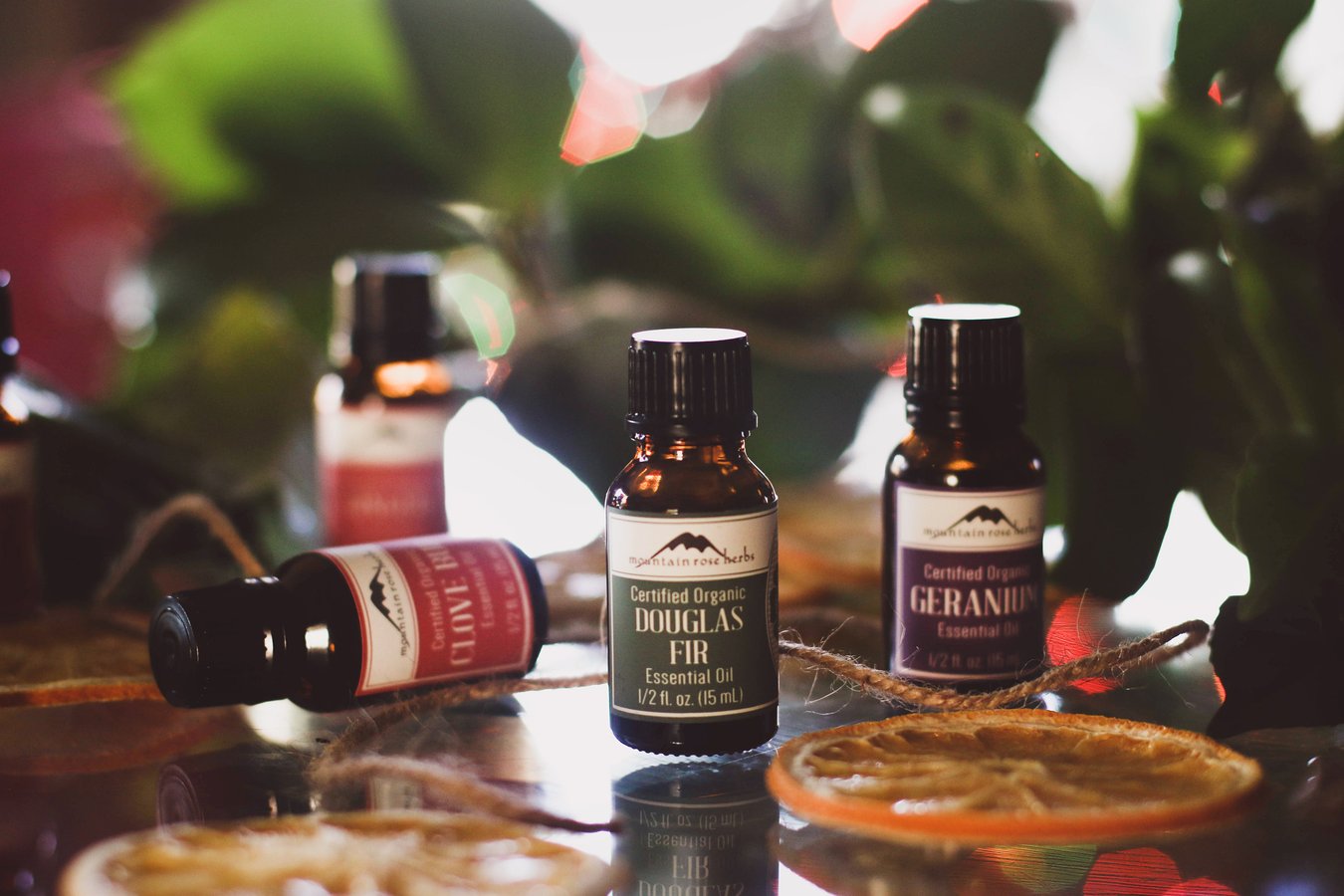
Winter Bloom Potpourri
This is a sweet, seasonal blend with a light floral touch that is particularly lovely in the winter. Set a bowl near your entrance for an aromatic “welcome home.
Ingredients
- 4-5 cups organic mixed bulk herbs
- 1 Tbsp. organic orris root powder
- 5 drops organic geranium essential oil
- 5 drops organic ginger essential oil
- 5 drops organic clove bud essential oil
- 2 drops organic Douglas fir essential oil
- 2 drops organic lemon essential oil
Directions
- Follow directions above.
Other Essential Oil Blends for Winter
- Pumpkin Spice
- 3 Holiday Blends: Minty Citrus; Oh, Christmas Tree; and Spiced Cream
- Winter Blues
Looking for DIY Gift ideas that are fun to do with children?
Try These Herbal Holiday Crafts for Kids
You may also be interested in:
- How to Create Your Own Essential Oil Blends
- DIY Spiced Orange Cream Candles
- 5 Holiday Decoration Ideas (with Herbs)
